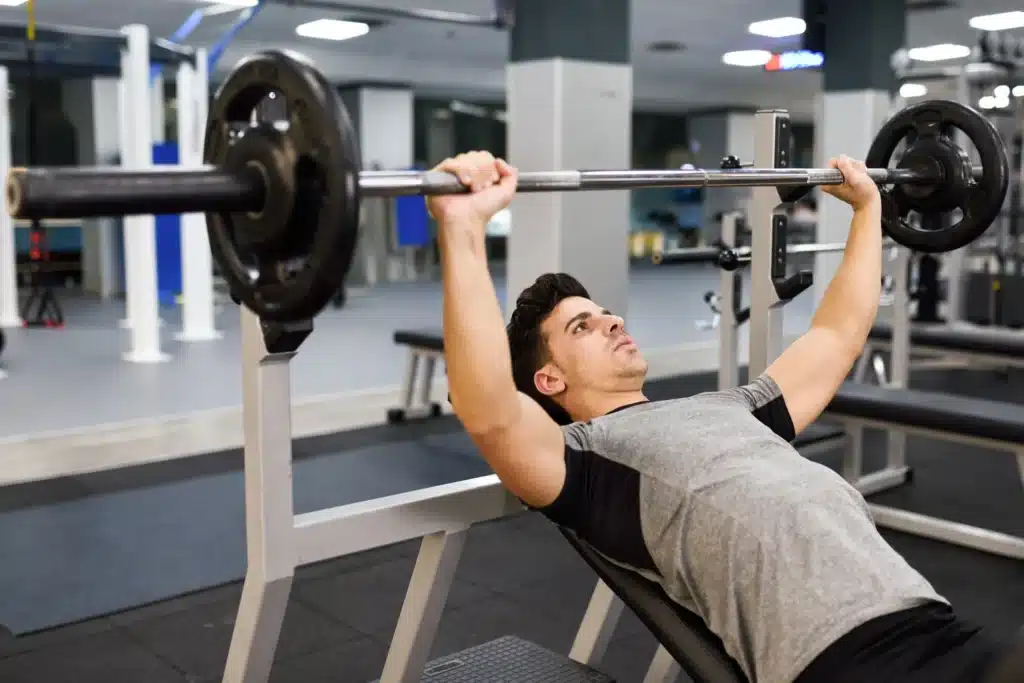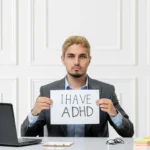Defeating addiction, or what’s often called substance use disorder (SUD), isn’t a one-size-fits-all kind of deal. Sure, tried-and-true talk therapies like cognitive behavioral therapy (CBT) are important. But more and more, people are also getting on board with whole-person approaches and drug replacement therapy.
Proper nutrition and physical activity can also seriously boost your recovery journey. Exercise can help prevent the likelihood of relapse and support long-term recovery. This includes aerobic exercise, strength training, and mind-body exercises like yoga.

What is Addiction?
Addiction, or substance use disorder, is a long-term health issue. It makes a person seek drugs or alcohol, even when it causes harm. If you are struggling with addiction and do not manage it well, it can harm your mental and physical health. This often leads to a relapse when you try to quit.
Addiction covers a range of substance use disorders, each unique in its traits and how it’s treated. The most common problem is alcohol use disorder. It affects nearly 18 million adults in the U.S.
The opioid crisis continues to make headlines. This includes prescription painkillers like Oxycodone (OxyContin®, Percocet®) and Hydrocodone (Vicodin®). It also involves illegal drugs like heroin and synthetic versions.
Newer substances like kratom are gaining attention. This herbal drug has effects similar to opioids and can cause dependency. Inhalants, such as common household chemicals and nitrous oxide, are also worrying. They’re easy to get and can be very harmful to the brain.
Stimulant disorders involve both illegal drugs like cocaine and methamphetamine, along with prescription medications for ADHD. Benzodiazepines, commonly prescribed for anxiety (including Xanax and Valium), carry significant dependence risks, particularly when used long-term or combined with other substances.
The understanding of cannabis use disorder is changing. It now sees the problems caused by strong THC products. At the same time, nicotine addiction continues with regular cigarettes and new vaping devices. Prescription drug misuse extends beyond opioids to include sedatives, stimulants, and other controlled medications when used outside medical guidelines.
Each of these substance use disorders affects brain chemistry differently, requiring tailored approaches to treatment and recovery.
Addiction isn’t limited to substances—any rewarding activity can spiral into compulsive behavior that disrupts your life. Unlike casual enjoyment, these behavioral addictions create neurological changes similar to drug dependence, hijacking the brain’s reward system.
Common types of addiction include gambling addiction, internet and social media addiction, food addiction, and sex or pornography addiction. There is also shopping addiction, which involves compulsive buying that causes financial problems. Gaming disorder is another type recognized by the WHO as compulsive video game use.

What Are the Benefits of Nutrition and Exercise in Addiction Recovery?
A balanced, healthy diet and exercise can’t replicate drug replacement therapy (DRT) like methadone or buprenorphine. It still helps clinical treatment by naturally regulating the brain systems that DRT targets. It boosts dopamine and endorphins to reduce cravings and withdrawal discomfort.
You can think of physical activity and exercise as a natural drug replacement therapy (DRT). Medications in DRT help stabilize the brain’s opioid receptors. Exercise has a different but equally important role.
1. Provides a Healthy Outlet for Stress and Negative Emotions
Exercise is a healthy antidote to the emotional rollercoaster of recovery.
The Science-Backed Stress Solution
- Just 10-30 minutes of activity can significantly elevate mood. It promotes mindfulness and focus, delivering a perfect, healthy distraction from negative thoughts and cravings.
- Releases GABA, a calming neurotransmitter that counters anxiety.
- Lowers stress and anxiety levels (Anxiety & Depression Association of America).
- Improves sleep quality by regulating circadian rhythms disrupted by substance use.
The Replacement Effect
Every workout session serves double duty. It occupies time that might otherwise feed addictive behaviors.
It also boosts natural dopamine levels. This helps reduce reliance on artificial highs. You will build self-efficacy as you see your strength and stamina grow.
2. Reduces Cravings and Withdrawal Symptoms
Healthy living and exercise are excellent aids in reducing the unpleasant withdrawal and craving stages. If you can manage withdrawal symptoms and cravings, you can start therapy and work towards long-term recovery.
- Exercise, particularly aerobic exercise, releases endorphins, natural chemicals that can counteract withdrawal symptoms and cravings.
- Engaging in fitness activities can be a drug replacement therapy, providing a natural high and improved mood.
3. Increases Feelings of Well-Being and Self-Esteem
That clear feeling you get after exercising is more than just a quick mood lift. The world seems sharper, your back feels straighter, and your self-judgment eases. Science shows that exercise creates a domino reaction of neurochemical alterations with lasting mind health dividends.
Research shows that exercise releases endorphins. These are the body’s natural painkillers. They help reduce discomfort and create a feeling of happiness, especially during long aerobic activities. Over time, physical activity also raises serotonin levels, stabilizing mood and creating healthier self-esteem.
4. Improves Physical Health and Strengthens the Body
Here’s how it helps:
- Lowers blood pressure
- Boosts circulation
- Supports metabolic recovery
- Regulates appetite signals
When you’re working through addiction, the impact on your body can be far-reaching. But exercise is one of the best ways to heal and reclaim your physical health.
Regular physical activity helps repair damage by kickstarting several recovery processes. It promotes liver regeneration, improves blood flow, and supports detoxification.
It also helps make your heart stronger if alcohol or stimulants have weakened it. It improves your lung function if smoking or vaping has caused damage. Additionally, it boosts capillary growth in the brain, which is important for restoring your cognitive health.
Exercise can also be a game-changer for weight management. A well-rounded program can help you regain control of your body by combining:
- Cardio exercises (also known as aerobic exercise) like brisk walking or cycling to build endurance.
- Strength training (think bodyweight exercises or resistance bands) to rebuild muscle mass.
- Flexibility work like yoga or stretching to enhance mobility.
5. Promotes Better Sleep and Restores Natural Circadian Rhythms
Many in recovery struggle with insomnia; exercise helps improve sleep quality. Think of exercise as a reset button for your internal clock.
Staying active during the day is important. Even a 20-minute walk can help. It teaches your body when to be awake and when to relax.
Research supports this. A study showed that people with chronic insomnia benefited from simple strength exercises. They fell asleep faster and had better sleep quality.
The benefits go way beyond just feeling rested. When you sleep well, your mind feels sharper and clearer. Cravings are not as strong, and you have more patience for stress. Best of all, a rested mind is less likely to relapse.

What Types of Exercise Are Most Beneficial for Addiction Recovery?
Not all exercise is equal—some forms are especially effective for addiction recovery:
1. Cardiovascular Exercise
Drug abuse can really hurt your heart’s well-being, making it more likely you’ll have irregular heartbeats, heart muscle disease, and high blood pressure. Studies suggest that specific heart-healthy exercises can actually help undo this harm and aid in getting better.
- Rebuilds Heart Muscle
- Lowers Resting Heart Rate (regular exercise reduces strain on an overworked heart)
- Improves Circulation
Swimming, cycling, and dance therapy are all great ways to get some cardio in while recovering. In some cases, your doctor may suggest an electrocardiogram (ECG) or an exercise stress test. This helps to check how your heart responds to physical activity.
These tests can provide helpful information about how your heart works during exercise. They can also find problems, such as coronary artery disease.
Begin your exercise routine at 50% of your target heart rate. Slowly increase the intensity over time. This will help you get the best and safest heart health benefits.
2. Strength Training
Strength training, or weight or resistance training, is a form of exercise that is designed to improve your overall strength. It does this by making your muscles work against resistance. This can be your body, weights, exercise equipment, or resistance bands.
- Weightlifting builds discipline and physical resilience.
- Helps reverse muscle loss caused by substance abuse.
3. Mind-Body Exercises (Yoga, Tai Chi, etc.)
Body-mind exercises are any form of exercise that uses physical movement, mental concentration, and purposeful breathing techniques. They are designed to facilitate social, physical, and mental well-being, balance, flexibility, and overall health. They help create a sense of wholeness between your body and mind. They can also reduce stress, which is a main cause of relapse in recovery.

How Often Should Someone Exercise in Addiction Recovery?
1. Regular Exercise (3-5 Times a Week)
- Consistency is key for stress relief and well-being.
- Even moderate physical activity can prevent relapse.
2. Intense Exercise (2-3 Times a Week)
- High-intensity workouts maximize endorphin release.
- It should be balanced with rest to avoid burnout.
What Are Some Tips for Incorporating Exercise into Addiction Recovery?
Implementing exercise as a regular part of your recovery process requires planning and being nice to yourself. Most people in recovery start exercising too hard or too gently. Finding a balance is the key to lasting success.
Start Slow and Gradually Increase the Intensity
It is sometimes tempting to test your boundaries when you’re just starting to get better. However, hanging in there and being patient tends to lead to a more successful outcome down the road.
Start with 10 to 20 minutes of walking or gentle yoga each day. Increase the time by 5 to 10 minutes each week. Aim to reach 45 minutes or more.
After 2 to 3 weeks of regular movement, you can add more intensity. A step-by-step approach to exercise can help prevent injury. It also lets the body build endurance naturally. This process is similar to the gradual progress seen in drug or alcohol recovery.
Find an Exercise Buddy or Join a Support Group
Some people find that sticking to exercise classes, particularly cardio exercises, is tough when doing it alone. If you can’t seem to find a good fitness coach, a supportive fitness community can be your recovery hack.
When people rely on you to attend weight-training classes, jogs or walks in the park, the treadmill seems less scary. Motivation waves hit you every time you’re sweating with good friends who understand your hustle. Shared struggles also create instant understanding, and celebrating wins together makes progress more meaningful.
Great places to find community support and workout crew:
✓ Recovery fitness groups (many rehabs offer alumni programs)
✓ Sober sports leagues – kickball, basketball, even rock climbing
✓ Gym buddies from your support group meetings
Set Realistic Goals and Celebrate Achievements
In recovery, progress is never quick or linear. Every individual’s success rate is personal, and what works for one individual might not work for another. Keep concentrating on embracing every single step that you advance. All of those little victories add up and bring about massive transformations.
Start with something very small. We are talking about setting goals.
For example, we might say, “I will walk around the block twice this week.” Another goal could be, “I will stretch for five minutes each morning.” We could also say, “I will go to the gym just to use one machine.”
It is because when you’re rebuilding your life and finding drug replacement therapy:
✓ Tiny wins rewire your brain to believe in progress
✓ Achievable goals prevent that “I failed again” spiral
✓ Each checkmark on your calendar builds unstoppable momentum
Track your wins visibly. Try using a whiteboard with daily checkboxes. You can also create a “victory jar” to drop notes about your accomplishments. Another idea is to text an accountability buddy after each workout.
Celebrate like it matters (because it does!)—your rewards. Even simple, small things can work miracles.
For example, you could get new workout socks for two weeks. You might enjoy a massage after reaching your monthly goals. Or, treat yourself to a healthy post-workout smoothie at your favorite café.
Remember: In early recovery, showing up is the victory. The distance you walk today beats the marathon you might run someday. Every rep, every step, every deep breath counts.
Try Different Types of Exercise to Find What Works Best for You
If just thinking about going to the gym makes you groan, then it’s likely you’re not going to keep at it. The secret is to stick with it, experiment with different things until you find something that actually feels like fun.
Try a mix-it-up challenge (for your first month). For example:
- Week 1: Try a yoga class plus a nature hike
- Week 2: Test out swimming plus bodyweight circuits
- Week 3: Try cardio exercises plus rock climbing
- Week 4: Revisit your favorites with a fresh perspective
Pay attention to how each activity makes you feel. Physically – Are you pleasantly challenged or wiped out? Mentally – Does time fly or drag? Emotionally – Do you finish feeling accomplished or defeated?
There are even a number of surprisingly effective, non-medicinal treatments that appeal to individuals in recovery. These activities are not the typical “drug replacement therapy.” They are part of the broad idea of holistic recovery.
This means mixing exercise with activities that help you feel calm and fulfilled. Some of the best options are equine therapy, gardening therapy, pickleball, and rock climbing. Horses reflect human feelings and give quick nonverbal feedback. You can also try aqua aerobics and pottery or ceramics.
Listen to Your Body and Take Rest Days When Needed
Take a break for a bit to reboot your body and mind, recharge, and heal. Recovery is about respecting your body’s cues. Some of the most important things to keep in mind should be to plan 1-2 rest days per week as non-negotiable.
Kindly pay attention to your body carefully to distinguish between usual soreness and worrying pain. Do “active recovery” with stretching or slow walks too. This reflective approach avoids burnout and teaches important self-regulation skills that help achieve sobriety.
Holistic Addiction Treatment at Rolling Hills Recovery Center
At Rolling Hills Recovery Center in Chester, NJ, we combine proven addiction treatment with holistic therapy and fitness programs. Our goal is to help you rebuild both your body and mind. Addiction recovery isn’t about fighting urges—it’s about rewiring your brain to silence them.
At Rolling Hills Recovery Center, we have seen how exercise classes can replace vodka cravings. We have also seen how yoga reduces anxiety better than Xanax. Our clients leave feeling stronger than when they arrived.
Our team blends science-backed workouts with therapy because recovery shouldn’t feel like punishment. Are you ready to try a different kind of treatment?
Call us at 973-606-9170 or email [email protected] to schedule a tour. We’re conveniently located at 25 Main St., Chester, NJ 07930. Let us show you how fitness can become your most powerful recovery tool.
Sources:
Alcohol Use Disorder (AUD): https://medlineplus.gov/alcoholusedisorderaud.html
GABA, Aging and Exercise: https://pmc.ncbi.nlm.nih.gov/articles/PMC11457286/#:~:text=Exercise
Author
-
Geoffrey Andaria is an experienced mental health content writer and editor. With a B.A. in English and Journalism, Geoffrey is highly educated in freelance articles and research.
View all posts -
Dr. Williams has held senior leadership positions in the behavioral health field for over 30 years. He has worked with diverse populations in various private and public sectors.
View all posts













